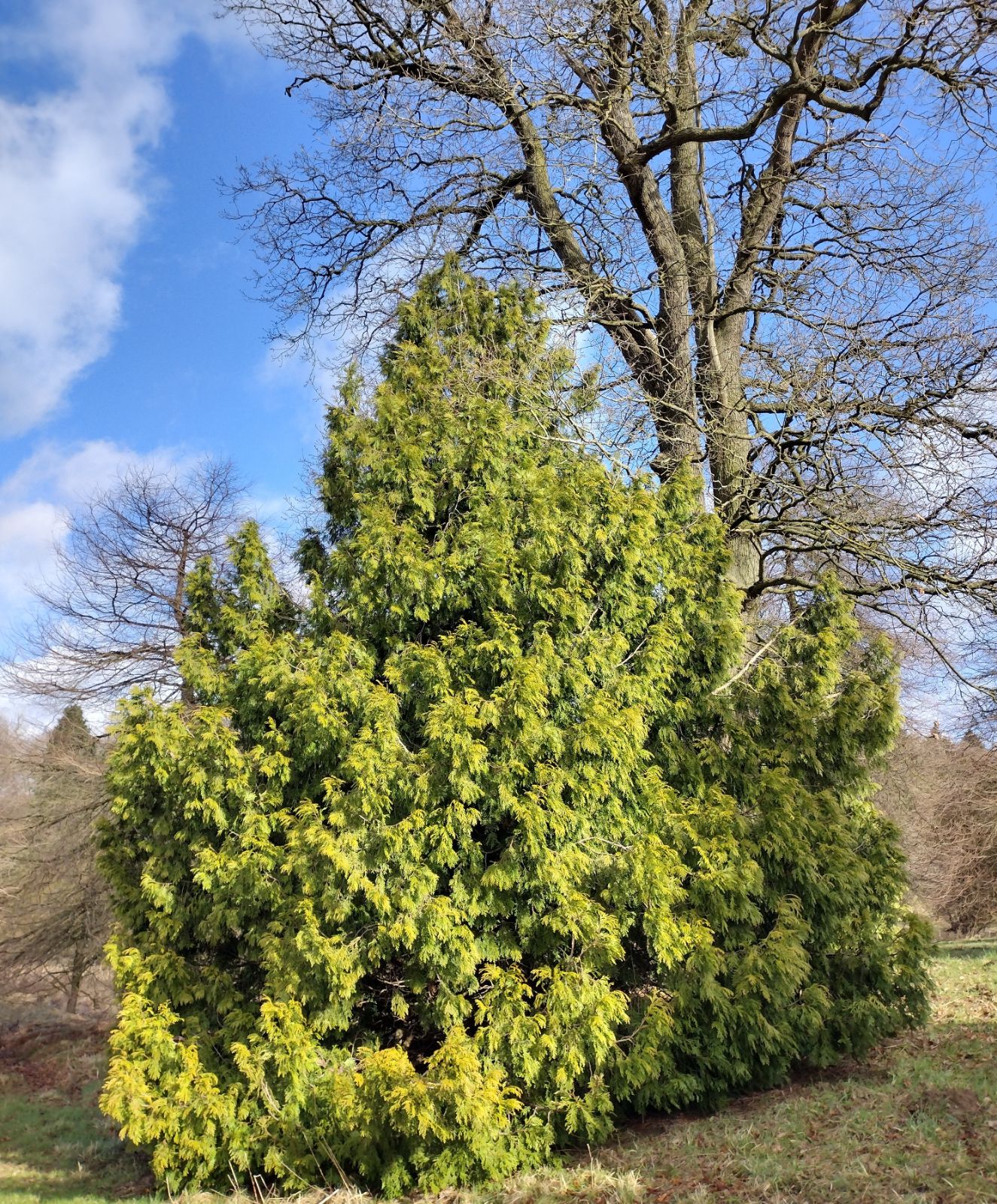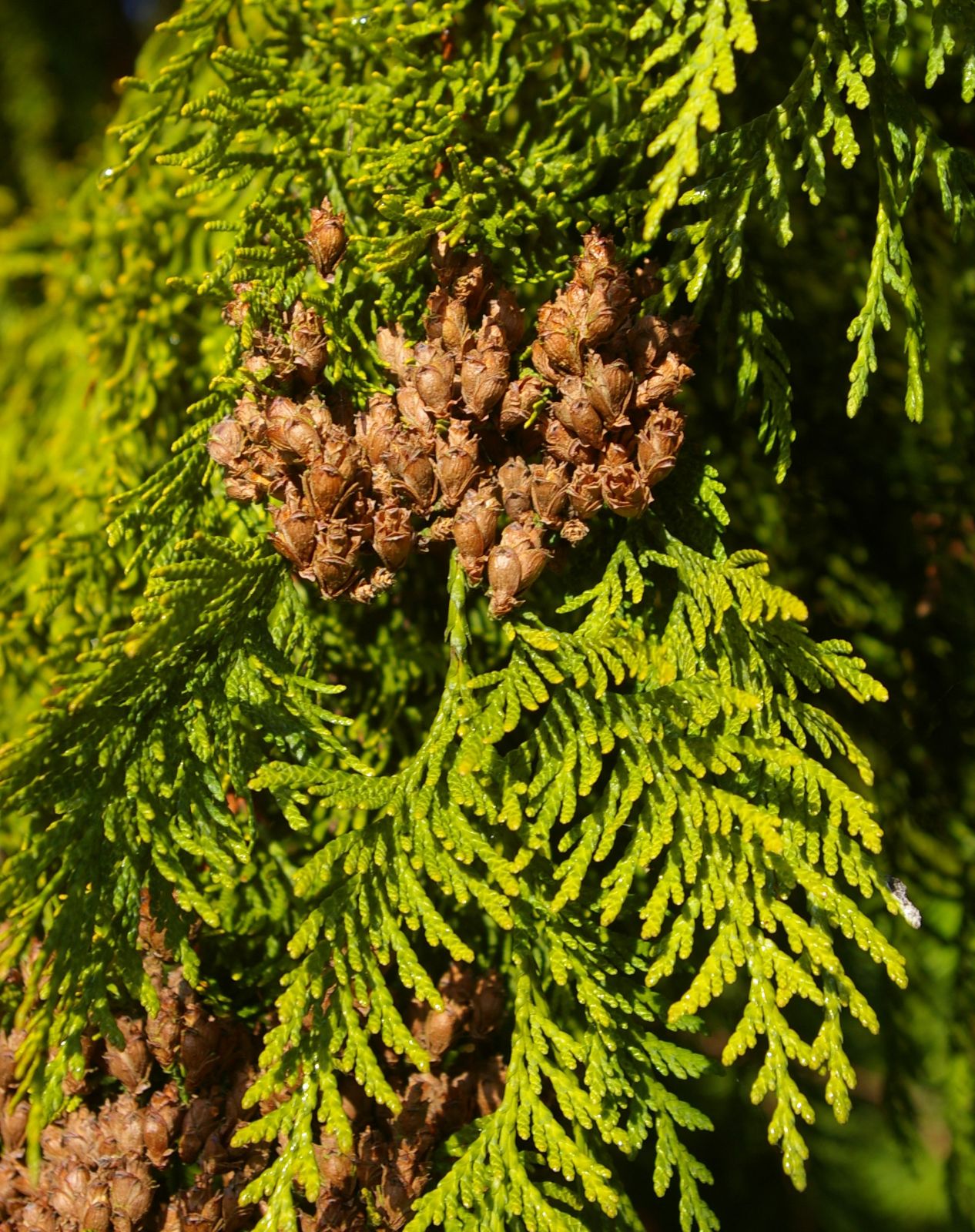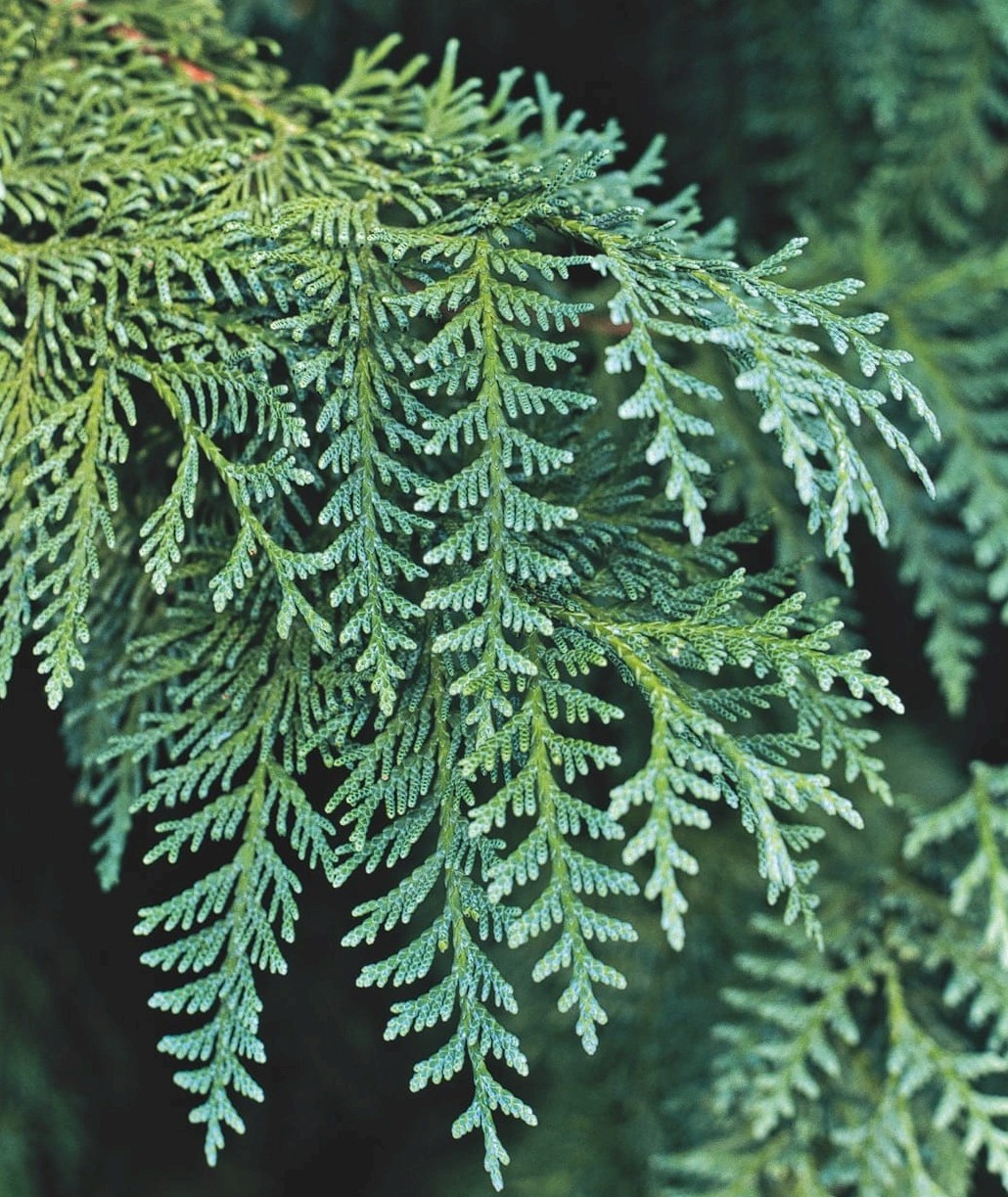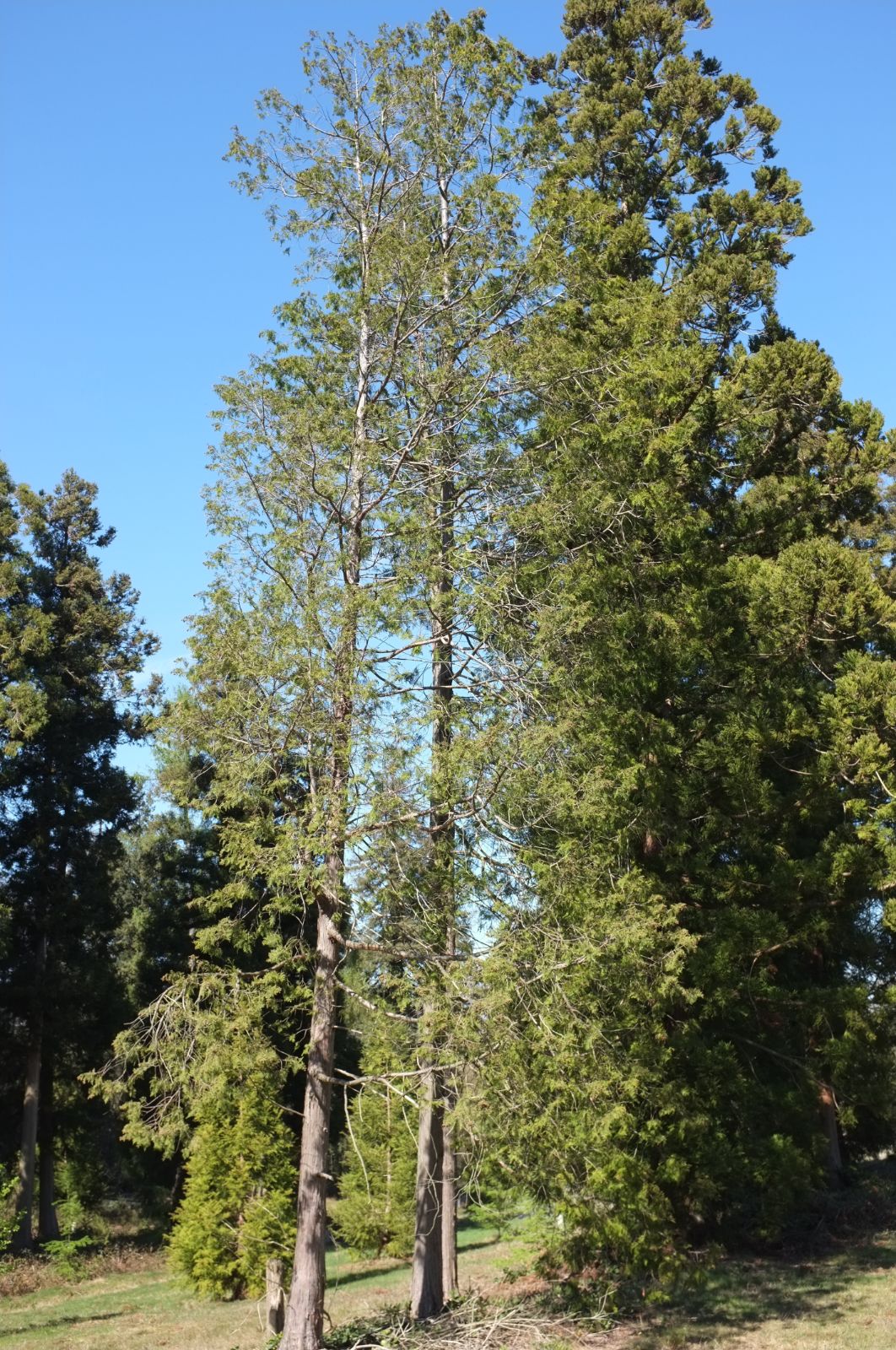Thuja
Credits
Article from Bean's Trees and Shrubs Hardy in the British Isles
Article from New Trees by John Grimshaw & Ross Bayton
Recommended citation
'Thuja' from the website Trees and Shrubs Online (treesandshrubsonline.
Family
- Cupressaceae
Common Names
- Arborvitae
Five species are recognised within Thuja, including two in North America (T. occidentalis and T. plicata), one in Japan (T. standishii) and one in Korea (T. koraiensis). The fifth species, T. sutchuenensis, of central China, was thought to be extinct but was recently rediscovered (Xiang et al. 2002). Thuja species are generally small evergreen trees or shrubs (though T. plicata can reach 50 m), with a broadly conical crown and billowing branches. The bark splits longitudinally, the ridges of the resulting fissures peeling off in long strips. Major branches are sparse, often pendent, sometimes rooting into the ground on contact; branchlets are dorsiventrally flattened and fan-shaped. The leaves are scale-like, keeled, appressed, decussate, partially decurrent and dimorphic; lateral pairs are falcate, partially overlapping facial pairs, which may have conspicuous glands, and the foliage is strongly scented. Male strobili are terminal, on lateral branchlets, with 6–10 microsporophylls; though technically solitary, the strobili are generally present on several adjacent branchlets, forming a cluster. Female cones are terminal and solitary, on lateral branchlets, and roughly ovoid, opening in the first year. Seed scales occur in two to six decussate pairs, of which only the middle two or three pairs are fertile; the seeds are lenticular, one or two per scale, with two narrow, lateral wings (Fu et al. 1999e). Thuja and its close relative Thujopsis Siebold & Zucc. are part of the Cupressoid clade, with affinities to Chamaecyparis (Gadek et al. 2000).
Thuja is an important and familiar constituent of the garden and park, whether as one of the numerous selections of T. occidentalis suitable for the smaller site (or the closely related Platycladus orientalis (L.) Franco – still widely known as Thuja, although it differs in several important respects: see Morgan 1999), or as the magnificent huge tree that T. plicata can become, even in apparently poor, dry conditions. They have generally been comprehensively covered in the standard dendrological literature.
An important recent introduction, however, is Thuja ‘Green Giant’ (Green Giant Arborvitae). This cultivar was first produced at the Hørsholm Arboretum in Denmark by crossing the North American Thuja plicata with the Japanese T. standishii. Material was sent to the US National Arboretum, where it proved to have exceptional horticultural qualities, and clones were distributed through the arboricultural community (US National Arboretum 1999). Thuja ‘Green Giant’ grows exceptionally fast (almost 1 m per year) and can reach 18 m, though it retains its tight, uniform, pyramidal habit. The bark becomes thick and fibrous with age. Major branches are densely packed, thick and horizontal or ascending; branchlets are rather coarse. The foliage is fragrant, dark green, lustrous above, pale below, and develops a bronze tint where exposed to winter sunshine. The cones are 1.0–1.5 cm long, green to brown, and persistent; the cone scales have a spine at the apex (US National Arboretum 1999, Advanced Tree Technology 2000–2008). Thuja ‘Green Giant’ has a number of advantages. It has no serious pests or diseases and can tolerate a variety of soil types and climates (USDA Hardiness Zones 5–8). Furthermore, its fast growth rate and uniform habit make it particularly suitable for hedging, and it is being promoted as an alternative to ×Cuprocyparis leylandii. It is being marketed in the United States under the name Green Rocket Hybrid Cedar (Advanced Tree Technology 2000–2008).
Bean’s Trees and Shrubs
Thuja
Thuya
A genus of six species (but see T. orientalis), all of them evergreen trees with thin, scaling or shreddy bark. They resemble Chamaecyparis in their flat, pinnately divided branchlets and scale-like leaves, but are very distinct from it in the cones, which are egg-shaped or oblong, and have flat, oblong and (except in T. orientalis) thin scales – very different from the peltate or top-shaped scales of Chamaecyparis or the true cypresses. A closer ally in the Cupressaceae is Libocedrus.
All the thuyas like a good, moist soil, and though best raised from seeds can be increased by cuttings.
The generic name derives from a Greek word used by Theophrastus for an African cypress-like tree with aromatic wood – probably Tetraclinis articulata (not treated in this work), a tender conifer mainly confined to Morocco and belonging to the same subfamily of the Cupressaceae as Thuja. The word was taken into classical Latin as ‘thya’ or ‘thyia’ and was later applied by some pre-Linnaean botanists to the American T. occidentalis, which had been introduced to France from Canada in the 1530s. They, however, rendered the name as ‘thuya’, as did Linnaeus in Genera Plantarum (1754). But in Species Plantarum (1753), where the name officially starts, he spelt it ‘thuja’, and this rendering is correct under the rules of botanical nomenclature, according to which the letter ‘j’ must be preserved in cases such as this, where it represents consonantal ‘i’ (like the English ‘y’ of ‘yes’). No doubt the main purpose of this rule is to preserve originally mediaeval spellings such as ‘Juglans’ and ‘Juncus’, which in classical Latin were written ‘iuglans’ and ‘iuncus’. The present work is in breach of the Code in using the familiar spellings ‘Buddleia’ and ‘Satureia’ in place of the technically correct but misleading ‘Buddleja’ and ‘Satureja’. The uncouth but correct ‘Thuja’ has, however, become so well established in horticultural literature that it would be pointless now to compound the offence by calling the genus Thuya or Thuia, as did most botanists until recently.
For reasons that can only be guessed at, T. occidentalis became known in France as ‘L’Arbre de Vie’ – a name that in its Latin form ‘Arbor Vitae’ came to be widely used in pre-Linnaean times for this conifer and was later extended first to T. orientalis, called ‘the Chinese Arbor Vitae’ by Miller, and then to other members of the genus. But like so many so-called popular names, it is more common on the printed page than in the parlance of tree-growers or foresters.




